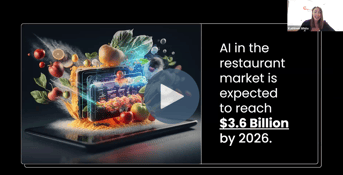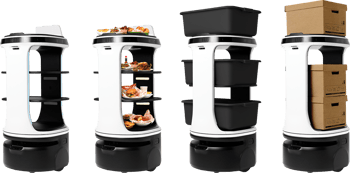Out of necessity, restaurants have had to get exceedingly creative since the start of the pandemic. Many have looked to ways of diversifying their revenue streams far beyond dine-in and delivery. And it’s prompted some chefs to launch meal kit programs – where customers get pre-portioned ingredients and recipes to prepare at home – now trendier than ever before.
Thinking about doing the same? We take a look at some of the major factors to consider before introducing a meal kit program through your restaurant.
High competition, but customer appetite could be equally high
There’s no doubt that when launching a meal kit program, you’re entering a highly competitive market. The major players like Blue Apron, HelloFresh, and Sun Basket bring in hundreds of millions of revenue per year. And as they expand, they needn’t give two thoughts about running an entire restaurant operation on the side.
But restaurant-driven options offer a few distinctive advantages, and depending on your customer base, you may be able to succeed despite existing competition. For starters, companies like HelloFresh and Blue Apron don’t bring opportunities for consumers to connect with the local community and support the businesses they love most.
“Many customers, when given an opportunity, want to spend multiples of what they are currently spending, should there be a diverse set of offerings that fit their lifestyle,” says Vivien Sin, CEO and cofounder of food industry subscription platform The Third Place. “Focus on your distinctive voice and offer meals and menus that cannot be offered by these national platforms.”
According to the National Restaurant Association’s 2022 State of the Restaurant Industry report, 53-percent of adults say they would be likely to purchase a meal kit that contained ingredients for a complete meal and instructions on how to cook, if it was offered by one of their favorite restaurants. With millennials and Gen Z adults, that number jumps to 80-percent. “Restaurants have every advantage – restaurants already have customers who love them, [and] restaurants can deliver meal kits with less carbon footprint and less packaging and fresher ingredients,” says Rishi Kumar, co-founder & CEO of DailyKit, an open-source meal kit software and technology company.
Bottom line, however, is that you need customers to sustain a meal kit program. Even many of the top existing platforms have struggled at points to retain patrons over the years. If you’re not sure about the appetite among your own restaurant customers, consider simply polling your audience. Drop a survey on social media, in email marketing campaigns, and on tabletops, and then consider the results before diving in.
Positioning (and pricing) your meal kit to match your goals
Before designing a meal kit program, prioritize your objectives. Is this a money-making mission or a brand-expansion endeavor? Your goals for the program will dictate both how you design and market the program.
If increasing revenue is the primary objective, price your packages slightly lower than you would menu items at your restaurant so that the consumer feels like they’re getting greater value, says Kumar. Then, try implementing a referral program. For example, give $5 or $10 towards the next order if you invite a friend and they sign up, says Kumar.
“Or you can do weekly subscriptions, so you can compete with players like Blue Apron,” he says Kumar. “And play around with the branding – ‘Rather than getting your meal delivery in an ice box from thousands of miles away, you can get it from your neighborhood restaurant.’”
If your top focus is expanding your brand, then you have more leeway with pricing. This means you can test out packages that include premium menu items. You aren’t likely to draw as many customers, says Kumar, but this could be a particularly good option if you don’t have the bandwidth to manage a large influx of orders, while enabling you to attract customers seeking a novel experience. No matter your approach, map out an estimated ROI analysis for each package you plan to sell so you can assess if it fits into your annual revenue goals.
Designing a menu that will draw repeat customers
Like pricing, menu design is highly subjective and will depend on your objectives. You may want to market versions of your top-selling dishes to draw in an initial customer base. Or you may want to use your program as an outlet to try out new dishes and expand your brand. With meal kits, there’s plenty of room to get creative.
“Some fine-dining restaurants [may] create more accessible family meal kits while some fast casual restaurants create more elevated versions of their regular offerings,” says Sin. “It goes back to what your goals are – do you want to expand what your brand represents, [or] do you just want a predictable source of revenue?”
No matter your mission, one of the greatest challenges of designing a meal kit program is figuring out the logistics, especially if you plan on assembling packages of individual ingredients. From inventory to billing to delivery, the details need to be refined in order to be successful. And you should start by assessing what kind, and how large, of an operation your kitchen, and staff, is capable of handling.
“One of the benefits of launching a meal kit program is that if you can bucket all of your orders into a few selective days – for example, once every two weeks [or] once a month – it becomes economical to have the delivery range be wider than your original, thereby activating new audiences,” says Sin. “If this is something you'd like to take advantage of, create dishes that can travel.”
Take into account both ingredient shelf life and your supply chain. And then put yourself into the mindset of a home chef. Unless you’re interested in carving out a niche market, aim for accessible dishes that can be recreated in any kitchen. “Do not include dishes that require commercial equipment, like wood-fired ovens or special commercial ovens or grills,” says Kumar. “It should take less than 90 minutes and ideally 15 to 30 minutes [to prepare the meal].”
Kumar suggests looking for opportunities to use components of your existing mise en place, and including some already prepared components, like sauces already on your menu, that will make the finished dish feel special, without requiring extensive work on the part of the home cook. If your current operations can handle it, you may also want to consider creating meal kits for larger crowds and marketed for special events. “You get bigger incremental revenue, you save a lot on packaging, and you deliver an experience to the customer where they get to serve 10 people with less prep and less work.”
Making time for marketing
Hit the right target numbers, and meal kits can become a consistent revenue stream that’s continuously running in the background. But you’re not likely to capture an audience without first investing in marketing. Sustained advertising of your meal kit program is essential.
“Take advantage of every touchpoint customers have with you,” says Sin. “For instance, you can have invitation cards in your checkbook at the end of folks' meals to join the subscription program, [and] put the link in the footer of every email you send out.”
You can also create a loyalty program that includes a friend referral component. And you’d be wise to activate not only your own social media channels, but encourage your members to post photos of meal kit dishes on their social media, too, perhaps in exchange for loyalty points.
“Marketing is important, but what's even more important is tracking retention, and empowering your existing subscribers to spread the word for you,” says Sin.
Using a third party to help with marketing and logistics
Creating a new project and executing marketing strategies is, of course, time-consuming. But it’s invaluable. If you don’t have the manpower or time to invest, you have two options: table the idea for the future, or partner with a third-party subscription platform. Table22, The Third Place, DailyKit, and Chef Meal Kits are just a few options.
Many of the existing platforms can help you not only optimize your advertising efforts and workflows, but often they offer consulting services, too. If you’re struggling with working out the upfront logistics, consider tapping into their experience for help.
[Photo by Kampus Production from Pexels]





